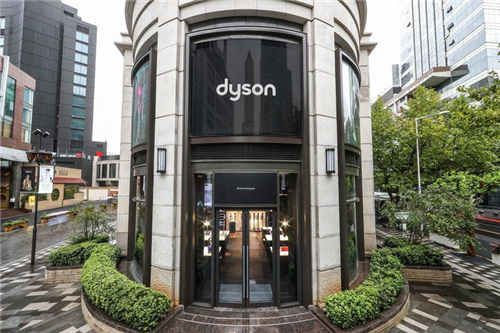Dyson sells more than 400 US dollars for a table lamp, how many people will bury
“I believe that buying just one lamp in a lifetime is enough. The trend of rapid updates and high replacement rates in this industry is flawed. It’s something we need to change, and it’s all about environmental sustainability,†Jake Dyson said when asked about how consumers deal with product iterations. As the son of James Dyson, founder of the British home appliance company Dyson, Jake has always been passionate about creating durable and sustainable products. In 2011, he even designed a lamp that could last for 37 years, using a design that cost only $860.
For nearly a decade, Jake focused on extending the lifespan of LED beads, ensuring they emitted consistent, soft, and low-stroboscopic light throughout their use. The breakthrough came from an advanced heat dissipation system. He developed a lamp using a vacuum copper tube containing a drop of water and a set of LED beads. The water absorbs the heat from the LEDs, vaporizes, and transfers it to the other end of the tube, where it cools and condenses back into a droplet, returning to the base. This closed-loop system effectively dissipates heat, extending the lamp’s life to up to 40 years while maintaining stable lighting performance.

Despite its innovation, the CSYS lamp didn’t enjoy the same popularity as his father’s G-Force vacuum cleaner. Part of the reason was that people were more afraid of dust than of unstable lighting. In 2015, James Dyson acquired his son’s lighting studio, integrating the lamp into Dyson’s product line at a price of $439. This brought Jake’s design into the spotlight, but consumer reactions were mixed.
Many questioned the high price: “Why spend over $400 for a lamp that does the same job as a $5 one?†Others said, “Even though I like Dyson’s vacuum cleaner, the lamp feels overpriced.†Some even joked, “I don’t really want to own a lamp that lasts longer than me.â€
In September 2017, Jake Dyson visited Shanghai to launch three of his lamps, bringing these challenges to the Chinese market. At the event, Dyson engineers demonstrated the copper tube heat dissipation system and the lamp’s flexible rotation. One engineer explained, “When taking photos with your phone, you can often see flicker from indoor lights. But if you look through the camera lens, you’ll find that the flicker from this lamp is much less noticeable.â€


Jake also criticized the traditional approach of many LED manufacturers. “In my research, companies with more than 20 LED lights are still using the same outdated methods. To provide customers with 5,000 product manuals, they’re stuck in old thinking. But actually, 5 products can solve the problem. They aren’t thinking about lighting with new ideas, but rather applying new technology with old mindsets,†he said.
While his words align with Dyson’s innovative philosophy, they haven’t fully addressed concerns about the high price. After all, the difference in flicker isn’t something most people can easily notice or care about.
Jake Dyson’s lamps have now been added to Dyson’s product lineup, and the company has seen some success in China. According to Michael Day Tod, CEO of Dyson China, around 10% of domestic users currently purchase Dyson products overseas. However, the company continues to face challenges, especially with pricing differences between mainland China and Hong Kong.

Dyson Experience Store at Shanghai Xingye Taikoo Hui
At the Dyson Experience Store in Shanghai, visitors can see various “dust samples†such as wood chips, salt, rice, coffee beans, and cereal rings displayed in glass jars. Employees explain how Dyson’s digital motor and dual-layer cyclone system work, allowing customers to experience the suction power of different models.
Before officially entering the Chinese market in late 2012, Dyson products were mostly available through overseas purchases—expensive, rare, and powerful. Once Dyson launched locally, the growth was slower than in the UK or US markets. Despite introducing products quickly, exchange rate differences made it cheaper to buy Dyson products in Hong Kong than in mainland China.


Dyson has high hopes for the Chinese market, citing the low penetration of vacuum cleaners in Chinese households. According to Euromonitor, only 5.3% of Chinese households owned a cylindrical vacuum cleaner in 2016. If Dyson can increase this number to 30%, it would represent a huge business opportunity in a country with a massive population.
Despite its strong product performance, Dyson faced some skepticism after launching the hair dryer. Some users commented, “The wind speed is strong and the heat control is good, but it still feels like a luxury item rather than a game-changer.â€
Although Dyson believes it has few direct competitors in its category, the Chinese market is highly competitive. Many of its products have been quickly imitated, such as the D-531 cordless vacuum cleaner, which sells for 999 yuan on Taobao and closely resembles the Dyson model.
Tomas Mark, Dyson China’s marketing director, said the team is working hard to understand the unique social dynamics of the Chinese market. “In the UK, we rely on ‘bar talk’ to know what people are discussing. In China, we study ‘WeChat talk,’ because that’s where people engage and share their opinions,†he explained.
Editor: Yan Zhixiang
Rice Transplanter Accessories,Rice Transplanter Spare Parts,Parts Of Rice Transplanter,Rice Transplanter Parts
Changzhou Youeryou Trading Co., Ltd. , https://www.farmpartssupplier.com